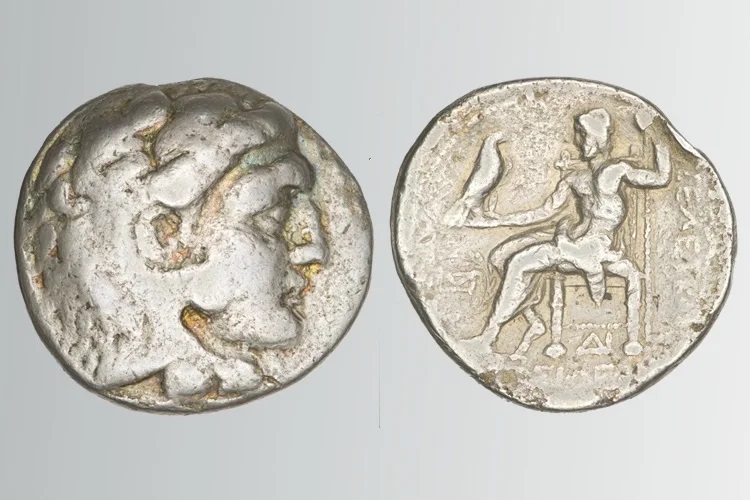
A team of scholars from the University of Toronto and the Royal Ontario Museum (ROM) are studying, cataloging, and publishing information on more than two thousand Ancient Greek coins.
“Greek coinage is so interesting because it’s almost the earliest coinage—at least in the Western tradition of coinage,” Ben Akrigg, a professor in the Department of Classics in the Faculty of Arts & Science, told the University of Toronto news.
“The idea is to make sure that our high-resolution photographs and up-to-date identification, dating and commentary are available on the museum’s website for anyone who wants to look at them,” he said.
The ROMkomma project—komma means “impression of a coin” in Ancient Greek—was launched in 2022.
The first phase of the project, which wraps up in 2024, focuses on about 250 coins from two regions of Ancient Greece: the city of Athens (sixth to first centuries BCE) and the cities of the Hellenistic Empire of the Seleukid rulers (fourth to first centuries BCE).
Ancient coins from Athens “resemble the coins we have in our pocket”
“If you look at the Athenian coins, what’s striking is that they’re instantly recognizable as coins, monetary instruments like ours – and partly because, in many ways, they resemble the coins we have in our pocket,” Akrigg says.
On the “heads” side, many of these coins have a profile image of Athena, the goddess of wisdom and war, and the city’s protector. The other side of the coins display symbols, such as an owl or an olive branch, associated with Athena.
“The owl is a symbol of wisdom associated with the goddess, though owls have other meanings as well,” says Akrigg.

Akrigg and his team provide information such as the weight, size, and dimensions of each coin, the approximate date it was minted, the meaning of markings, and other relevant information about its use and significance in Ancient Greek history.
While the bulk of the updated information is housed in a database for ROM internal use only, there is a small database available to the general public, the University of Toronto news reports.
Ancient Greek coins “trace changes in the economy”
“To some extent, we can trace changes in the economies and the day-to-day lives and day-to-day uses of money in Greek cities by seeing what kinds of coins they’re minting,” Akrigg says.
Later coins from the Seleukid Empire often placed rulers on the face of the coin, especially Alexander the Great, with the image of a god such as Zeus or Apollo on the reverse, as well as a variety of creatures such as turtles, lions, and elephants.
“At the end of the fourth century BCE, some of Alexander’s successor kings put Alexander’s portrait on their coins, but then after a while, the kings thought, ‘Hang on, why don’t we just put ourselves on?’” says Akrigg. “And so coins became a way to assert their own legitimacy as kings in their new kingdoms.”

For Anastasia Zabalueva, a PhD student in the Department of Classics, the ROMkomma project is more than the analysis of ancient artifacts and identifying whose face is on what coin. It’s a journey into cultural history.
“Each kingdom depicted on their coins represents something very important for the community: it might be a god or goddess, an animal, a ruler, an abstract symbol,” she told the University publication.
“It’s much more than just a means of exchange,” she said. “It’s a display of local culture, history, power and state propaganda all at the same time.”
Though ROMkomma is a massive project that will ultimately take years to complete, Akrigg says he will always get a charge out of seeing the coins first-hand.
“The coins are mass-produced but because they’re handmade, each one is unique,” Akrigg says. “No two coins are exactly alike. They’re unique little works of art.”
See all the latest news from Greece and the world at Greekreporter.com. Contact our newsroom to report an update or send your story, photos and videos. Follow GR on Google News and subscribe here to our daily email!



